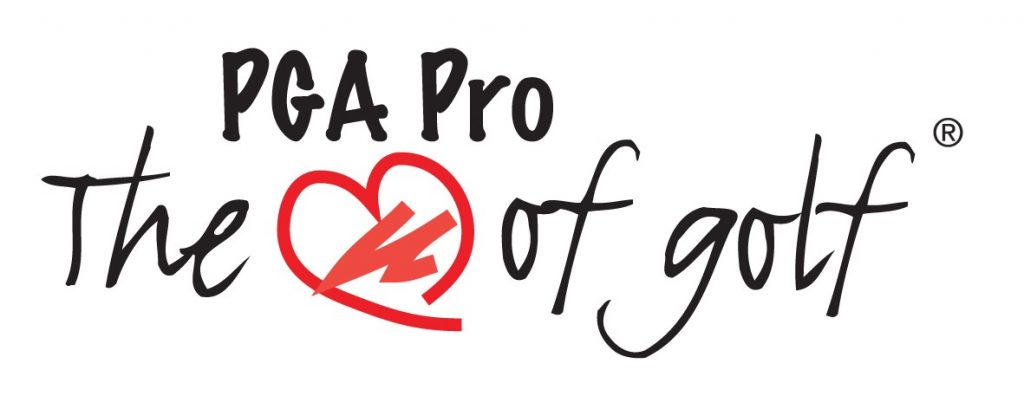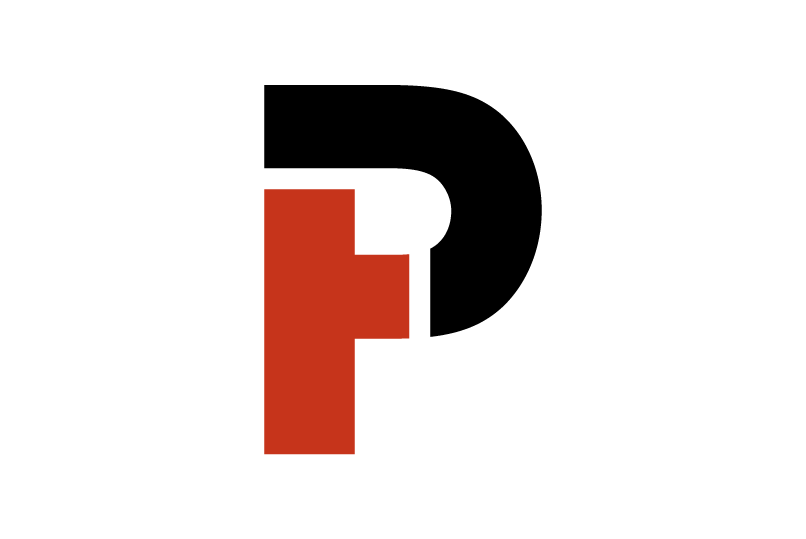Facts Instead of Opinions
There are many techniques and tools to develop a solid mindset on the golf course. One technique which I’ve gathered from Karl Morris, a widely known performance coach and sport psychologist is a concept based around giving ourselves the facts and not our opinions. Let’s paint the picture and explain why this concept can be your secret weapon too. I’ve been there, and if you’re reading this, I’m assuming you’ve been there too- Just finished the front nine, a reasonable score going and suddenly, our missed shot appears- lost ball (or something similar). On comes our opinion of the shot and of ourselves. Some of which may not be appropriate for this article, but you get the gist! The problem with flooding ourselves with our opinions and poor self-talk is that it generally effects are decision making for the next few holes, and one dropped shot can easily turn into five! Poor shots are going to happen in every round, the key is learning how to deal with them.
Here is the alternative- By having a system or a ‘tool’ in which to handle this unavoidable situation we can give ourselves the chance to deal with it much better and save shots in the process. The tool in this case is understanding our impact and being clear on what makes the ball do what it does- The Facts- we must know them, they’re much more valuable than our opinions in a situation like this. But in order to know the facts we need an understanding of impact and some of the factors that go into it.
The purpose of this article is to give you some examples of ball flights and talk about two of the impact factors that cause them. By learning these facts- we will a) Be in a much better position to deal with poor shots on the course and b) We will begin to ask ourselves the right questions in order to fix them on the course when they show up.
First things first
Before we can jump in there, we must lay some foundations and clear up some definitions first. The first sequence of detection to understanding the facts is noting the characteristics of the ball flight for example, did it fly straight or did it have curvature, if so in what direction. From there we can work back to impact which will tell us two important factors which explain why the ball does what it does, the CLUB FACE and the CLUB PATH. The orientation and relationship between these two factors are key in understanding and improving ball flight characteristics.
(Important Note: There are other factors and variables including strike location that will alter the ball flight but for this article, we are assuming a centred strike and focusing on two factors)
CLUB FACE
The club face angle is where the club face is pointing at impact. On Trackman a clubface square to the target would read as zero degrees. For a right-handed golfer if the club face was pointing right of target (open club face) the Trackman would read a positive number. If it was pointing left (closed clubface) it would read as a negative number. The golf balls start direction is predominantly influenced by where the club face is pointing at impact.
CLUB PATH
The club path is the direction the club is moving through impact in relation to the target line. Like the club face, on Trackman a neutral club path will read as zero degrees. If it is moving from in to out (towards the right) for a right-handed golfer this would read as a positive number. If it is moving from out to in (towards the left) it will read as a negative number. The club path and its relationship to the club face will influence the curvature we see on the ball
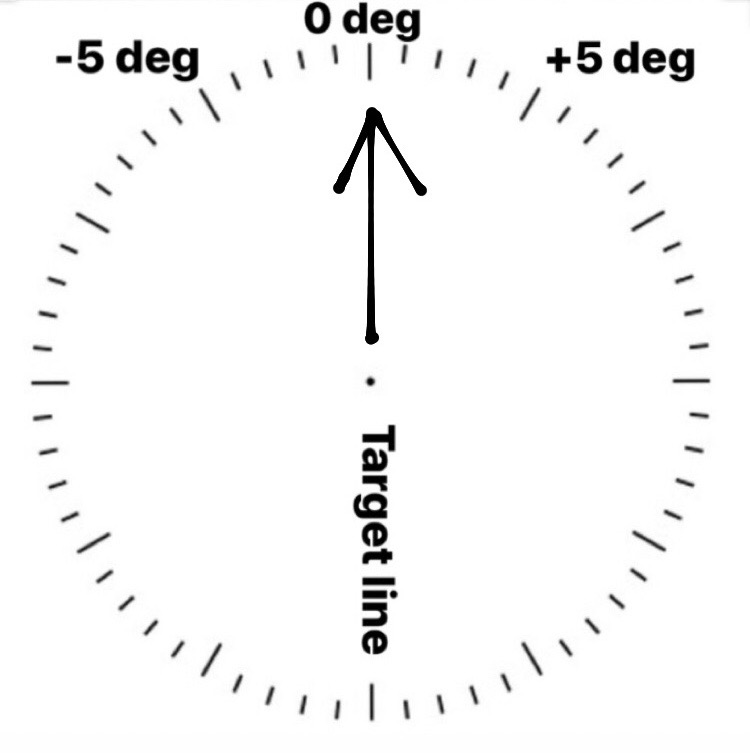
How to think of degrees…
Think of the degrees on Trackman left or right like seconds on a clock face.
12 o’clock being our target line, or, zero degrees. Not much room for error is there? It doesn’t take much for a club face to go from zero to +3. And that could be the difference between a ball on the fairway or a ball stuck behind a tree. Like I always say, golf is hard! But we love it!
Now that we have those foundations in the place were going to dive into some different ball flights and figure out exactly why they happen…
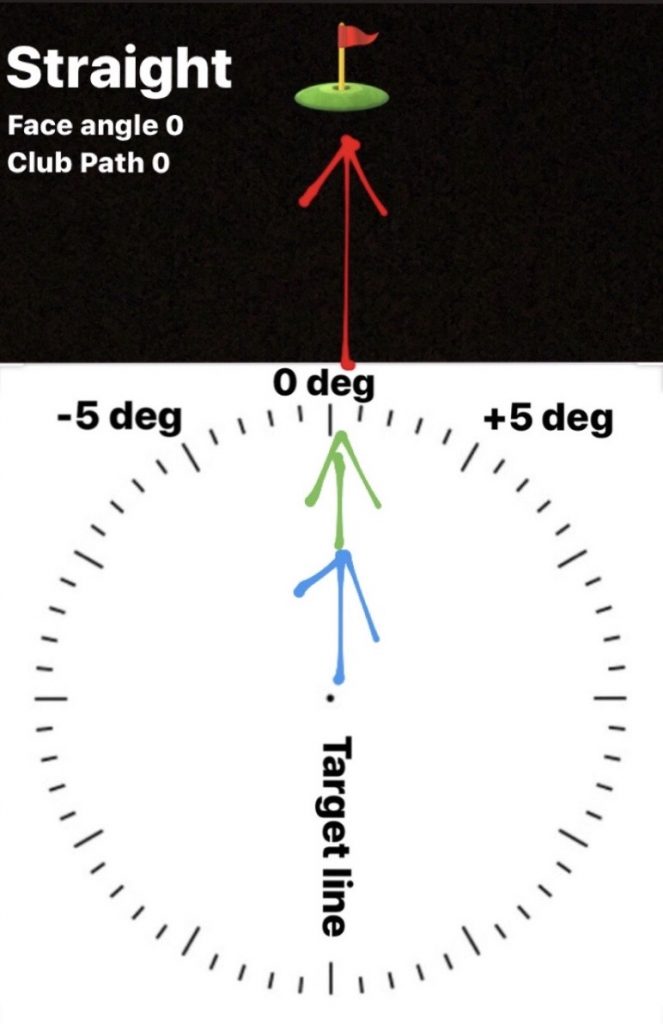
The Straight Shot
Here´s the facts about a ball flight that travels straight with no curvature. Both the club face and club path must be at zero at impact. Club face angle pointing at the target and the club path swinging in the direction of the target at impact. The difference between the club face and club path is zero which means there will be no curvature on the ball. The ball won’t move from your target, unless there’s wind (see last week’s article).
Whilst it’s a very nice ball flight to hit, very few players have this shot as their ‘stock shot’ as most will have a preferred curvature and it’s a very hard to pull off consistently. However, by understanding how it happens it gives us a good starting point.
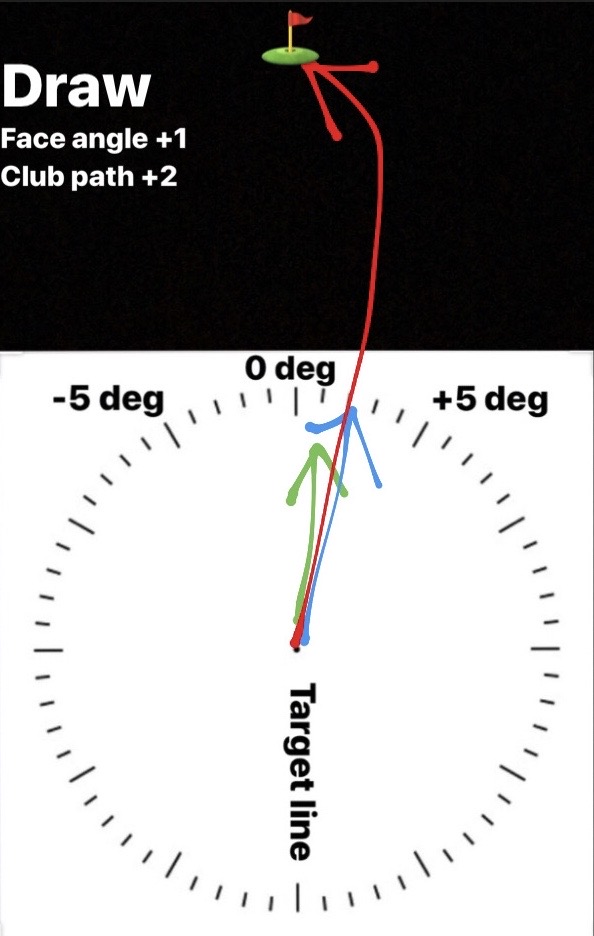

The Fade and Draw are ball flights I’m sure we are all fond of. Whichever your preference, both ball flights will curve back towards the target and finish close to it. What is important here is to notice the relationship between the club path and club face in both shots. The face angle on both shots is half the amount of the club path. This is the relationship we are looking for and will put the desired curvature on your shot. What we will see next is what when this relationship begins to change, so too does the ball flight…
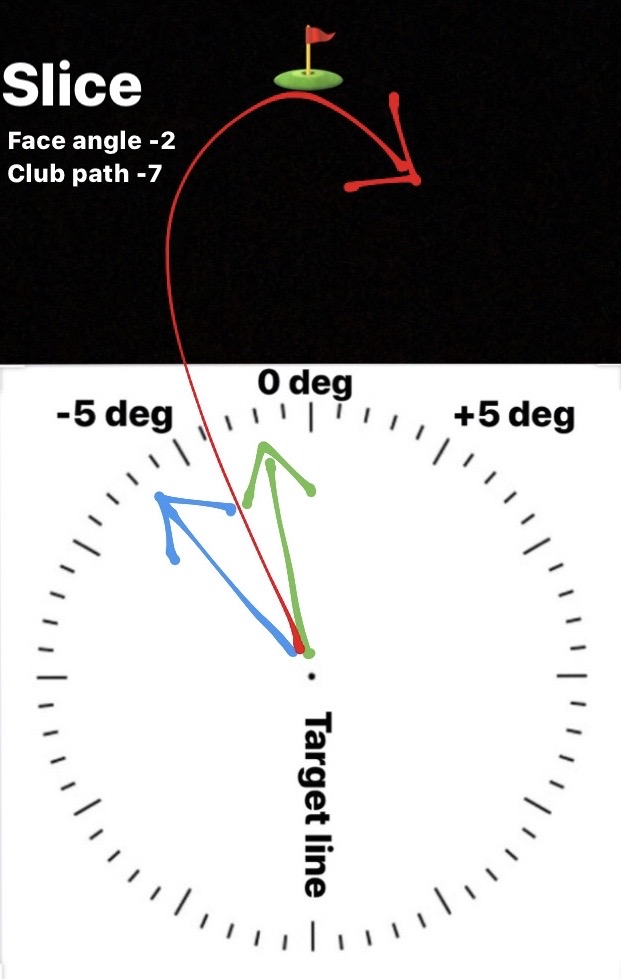
The Slice
More than 80% of golfers have trouble with this ball flight. Here’s the facts about it. A slice for a right-handed golfer is when the ball starts left of your target and curves excessively to the right. So, if the ball starts left the fact is the club face was closed to the target at impact. And if the ball curved to the right of the target the club path was traveling excessively out to in.
The amount a ball curves comes down to the relationship between the club path and club face. The bigger the difference between them the more curvature there will be on the ball flight.
A lot of times I see players looking to solve this by swinging further left to stop the ball from going to the right. The problem here though, you guessed it, the more the player swings left the more right the ball will go. The player who struggles with a slice will most definitely cure it by learning how to hit a hook, read on…
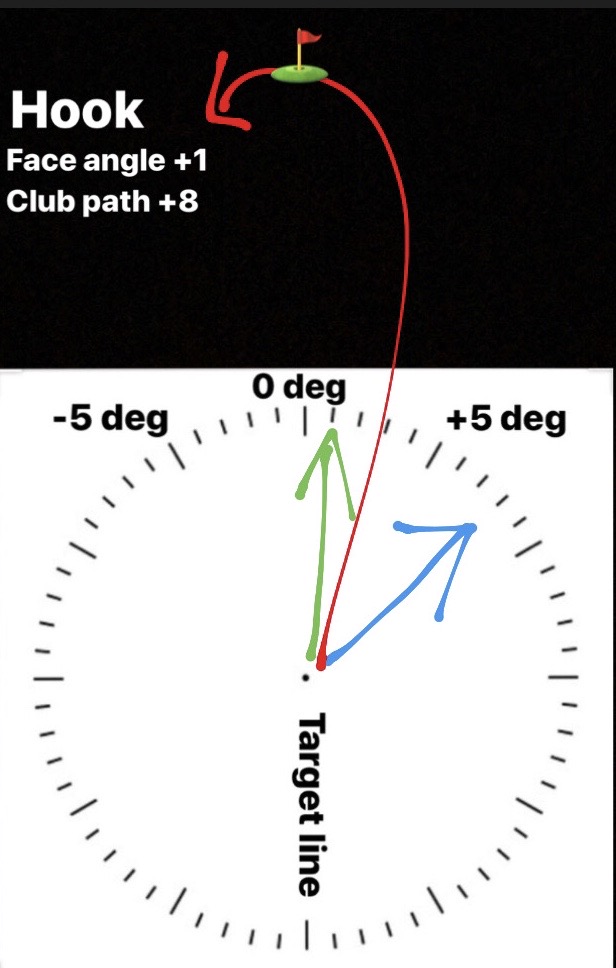
The Hook
For a right-handed player this is when the ball starts right of the target and curves excessively to the left. Like the slice, we all know what our opinions are of this shot, but they don’t help us much to solve it, here are the facts. If the ball starts right, then the club face was open to the target line. If the ball curved too far to the left then the club path was moving excessively to the right of target, travelling in to out.
So, among those five different ball flights there is lots of variation that can happen, but by understanding the foundations behind them we are well on our way to playing our chosen one more often. Next let’s look at what the best players do and have in common when we look at their club data.
Benchmarks
I always like to provide benchmarks. Information is great but we have to be able to place it somewhere and know what’s good. When we look at the most accurate players in the world, we see a lot of similarities in the club face and club path numbers. The general benchmarks are:
- They keep both club path and club face numbers within +3 and -3, depending on what ball flight they prefer to hit- A fade or a draw.
- They repeat similar numbers more often- Consistency
- They know what their optimal numbers are and what they feel like in their swing.
- They have tools and drills to fix them when they’re off.
Closing words
By no means up until now have we covered all the variables of the different ball flights nor all the other impact factors which are involved. That would require me to write an actual book, which I won’t rule out given the situation we’re in! We will however be looking at more impact factors in upcoming articles. But what we have done is lay a foundation, and a factual one at that. A foundation I want you to draw on in your next post shot routine, golf lesson or practice session whenever that may be.
Like Karl Morris says by understanding and dealing with the facts we can make a clearer shot analysis and a better decision on our next shot. We can also start asking ourselves the right questions on how to go about improving and changing these numbers to achieve the ball flight we want.
If you have any questions on your game specifically and are looking for help in identifying the relevant impact factors for your game don’t hesitate to reach out.
Until then,
Onwards and upwards,
Coach
Phillip Tanham
PGA Professional
philliptanham@gmail.com(+34) 664-135-470
